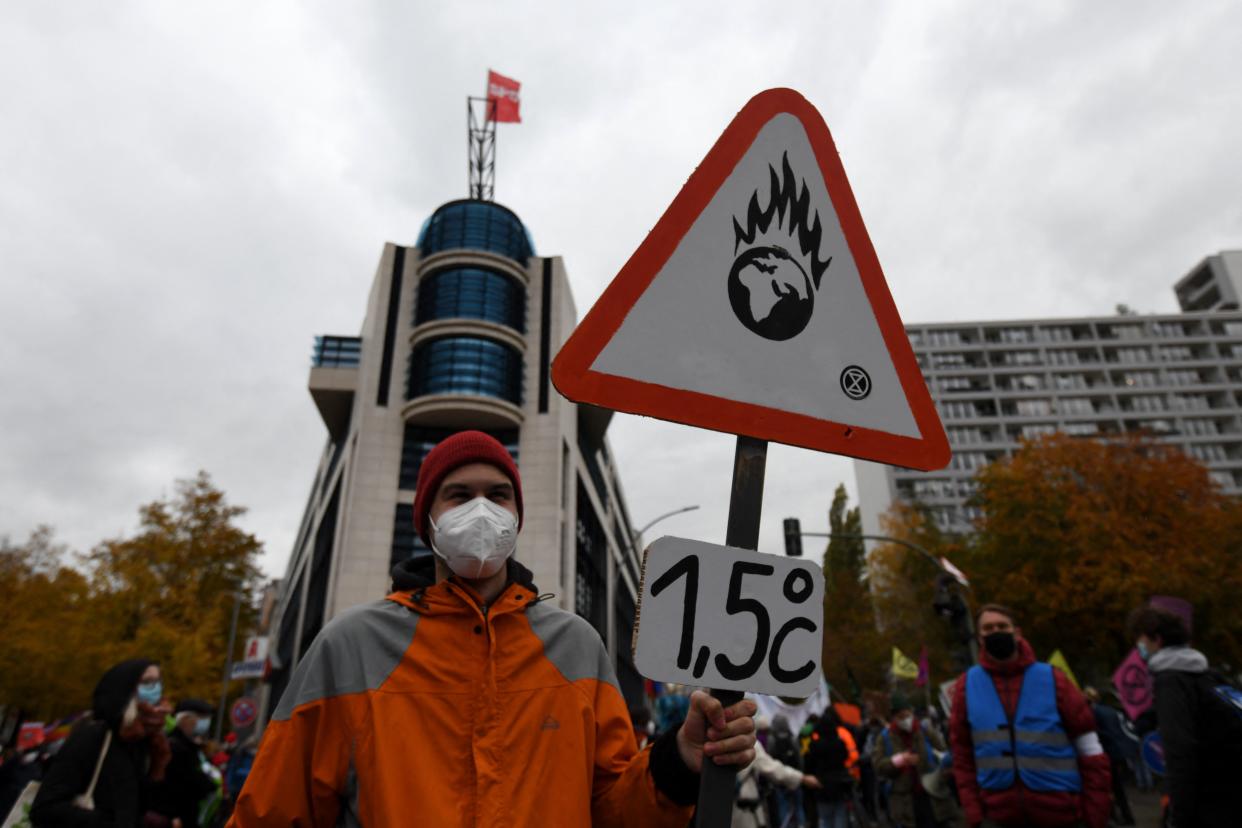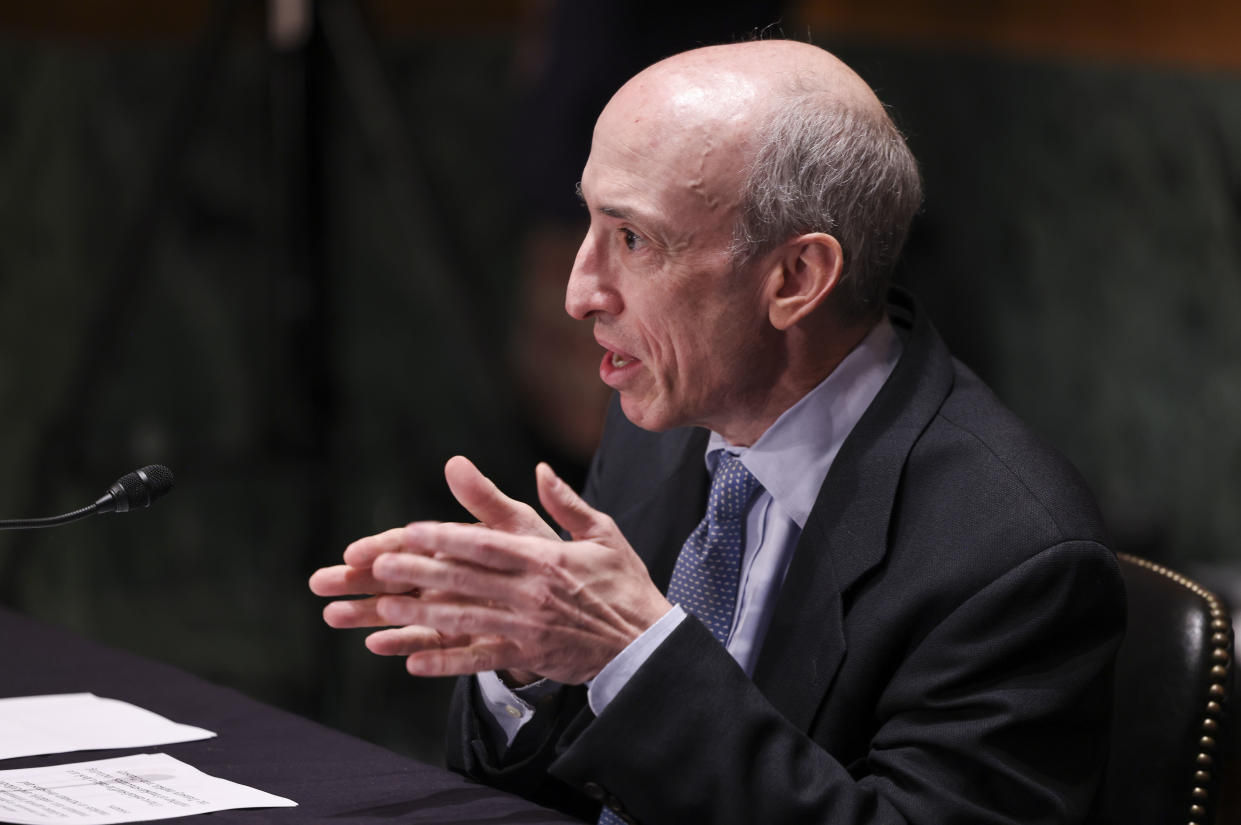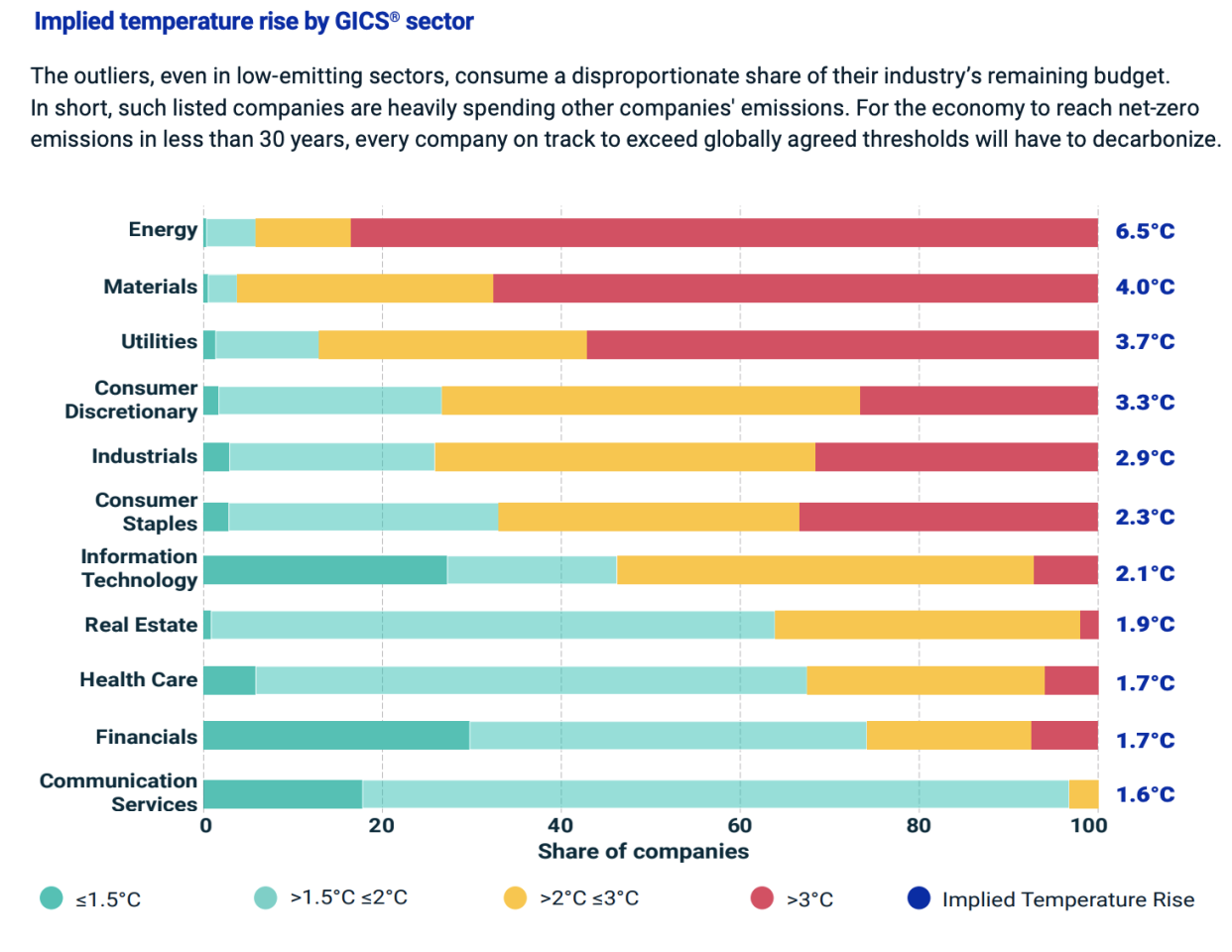UN Climate Change Conference comes as most companies and nations lag sustainability targets
The world’s largest corporations will face heavy scrutiny at the UN Climate Change Conference (COP26) in Glasgow as the private sector is increasingly expected to take on a heavier load in helping avert the worst impacts of the climate crisis.
Most nations are behind targets set by the Paris Agreement, and a closer look at the carbon footprints of large companies show that most public commitments fall well short of what’s needed to reach net-zero emissions by 2050.
Yahoo Finance will be reporting from COP26, which is set to begin on October 31 and last until November 12 in Glasgow, Scotland.
While 80 percent of the S&P 500 companies disclose annually on climate change through CDP, a non-profit that runs the world’s largest environmental disclosure reporting mechanism, just 30 percent have offered concrete science-based targets for how they plan to decarbonize by the middle of the century.
And a recent survey by MSCI found less than half of all publicly listed companies are aligned with a temperature rise that limits global warming to 2 degrees Celsius, a critical target to avert catastrophic effects established by climate scientists.
“The biggest divide are those companies that are making 2050 net-zero pledges without setting the interim science-based target,” Simon Fischweicher, the Head of Corporations and Supply Chains for CDP, told Yahoo Finance. “What they’re doing there as a company is saying, I'm going to get to net zero by 2050, but I don't have the interim plan that's in line with what science is determining is necessary to maintain planetary sort of carbon budget boundaries before then.”
That divide is sure to be magnified, with the meeting of nearly 200 nations being hailed as the “world’s last best chance” to get climate change under control.

For companies attending COP26, the event represents crossroads of sorts.
Amid growing shareholder pressure to step up climate action, the frequency and severity of extreme weather events, and global regulators moving quickly to draw up a framework to mandate climate risk disclosures, executives are looking to get out ahead and seek public partnerships that will not only make business sense but also minimize the companies’ carbon footprint.
“What’s clear to us is the government can’t do this alone — the private sector can’t do this alone,” Barbara Humpton, CEO of Siemens USA, said in a recent interview with Yahoo Finance. “It will take all of us thinking systematically.”

Transitioning to net zero without guardrails
Public declarations of broad-based climate initiatives have grown louder in recent years, in part because of the explosive growth of environmental, social, and governance (ESG) investing.
Global assets under management in ESG funds have more than tripled to $40.5 trillion in 8 years, according to EY, making it one of the fastest-growing segments. While the growth has been driven by concerns about climate change, the relative outperformance of ESG investments has made the funds even more attractive, encouraging listed companies to seek inclusion by any means possible.
“There's incredible momentum behind ESG investment and so there's a lot of alpha to be captured...from being included in ETFs or mutual funds or ESG portfolios that are looking for, you know the checkbox of hey they're setting that net-zero goal,” Fischweicher said.
The lack of universal guardrails have made progress difficult to track. While Europe enacted regulation that requires asset managers to substantiate their ESG claims, U.S. regulators have yet to follow. The Securities and Exchange Commission (SEC) published guidance for climate risk disclosures for publicly listed companies in 2010, but those disclosures remain largely voluntary. Now, the SEC is taking public input on how to update those rules.

Climate change poses a 'systemic risk'
Earlier this month, the White House unveiled what it dubbed a “roadmap” to building climate resilience in the economy, saying the inability to systematically track climate risks in the financial system presented a ‘systemic risk.’
“The term systemic risk carries a lot of weight,” Bharat Ramamurti, National Economic Council Deputy Director, said in a recent call with reporters. “Its inclusion in this roadmap reflects our belief that many financial models and investment portfolios still rely on out-of-date assumptions of climatic stability.”
The IPCC, the UN’s Climate body, has said any temperature rise beyond 1.5 degrees by 2050 will bring greater peril and dangerous “tipping points” that will be irreversible. Yet, MSCI’s survey shows that globally listed companies are operating under an implied temperature rise of 3 degrees. Single out the energy sector, the largest source of global greenhouse gas emissions, and that number more than doubles to 6.5 degrees.

Determining the scope and consistency of measuring climate risks is sure to weigh heavily in discussions on the sidelines of COP26 as the spotlight shifts from public declarations to concrete action.
Former UN Climate adviser Svenja Telle says companies won’t just be judged on the transparency of their emissions footprints but on the research and development of emerging technologies needed to accelerate the pace of decarbonization in the next decade.
“With the technology in place, we can reduce emissions by around 65 percent,” said Telle, who is now the Emerging Technology and Research Analyst at Pitchbook. “But to achieve net zero by 2050, we need to invest in novel and nascent technologies.”
Akiko Fujita is an anchor and reporter for Yahoo Finance. Follow her on Twitter @AkikoFujita
Read the latest financial and business news from Yahoo Finance
Read the latest news on the climate crisis from Yahoo Finance
Follow Yahoo Finance on Twitter, Facebook, Instagram, Flipboard, LinkedIn, YouTube, and reddit
